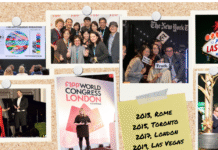
In the face of record climate crises, conscious consumers, and rising regulations, businesses today need to stand for more than the products they sell. We have entered a new era of responsible printing – and the world is watching.
If 2021 was all about turning the tide on the pandemic, 2022 is about adjusting to its new realities. Pressure on sustainability is building. Demands for improved environmental practices and sustainable goods is rising, with 60% of consumers claiming that they have altered their purchasing habits to become more sustainable and 74% of consumers now willing to pay more for sustainable packaging 1.
As we move further away from the linear ‘take, make, waste’ production model, the world’s leading brands are embracing a more circular economy, not only because it’s good for the environment, but because the market – and increasingly, the regulators – demand it.
So where does that leave you? For PSPs and print converters, the pressure is on to lower carbon footprint and transform waste into valuable resources. As consumers and brands look to printers to help them earn their status as good corporate citizens, sustainability isn’t just a differentiator – it’s the key to future profit.
It pays to be sustainable.
Going digital
Digital printing is, by nature, more sustainable than traditional print. It reduces waste through the elimination of plates and cylinders, reduces the physical distance between production and customers, and cuts emissions. It’s fast and flexible, which means that businesses can rise to new demands for personalization, premium products, and just-in-time printing through shorter runs too.
In fact, digital print can reduce supply chain waste by up to 26% and cut carbon footprint by 65-80% 2.
But responsible printing isn’t just about waste. PSPs and converters must examine the entire lifecycle of their product, including its supply chain, function, marketing, and recyclability to deliver positive social and environmental outcomes that consumers now demand. It must be circular, from every angle.
That’s where HP Indigo can help.
Leading a new era of sustainable print
“Innovation can only be considered progress if we are taking care of our natural resources and the foundation of our earth. Technology’s contribution to society must go hand in hand with strengthening our planet and creating the framework for our communities to thrive,” says Haim Levit, SVP and general manager Industrial Print.
There’s a big difference between printing and printing with HP Indigo. For decades, HP Indigo has driven sustainability with innovation that minimizes waste, maximizes efficiency, and streamlines systems to make print more sustainable. In 2016, EarthShift Global confirmed the benefits of HP Indigo digital presses over traditional printing methods 3.
As the world’s leading consumer goods brands pledge ambitious targets, such as 100% recyclable and reusable packaging by 2025, they’re turning to HP Indigo to fulfill their needs.
Reduce, recycle and reuse
Protecting future generations from the devastating effects of overloading the atmosphere with carbon requires a collective effort to move towards carbon neutrality. One simple step that businesses can take to drive this agenda is to partner with HP Indigo since all presses are manufactured carbon neutral. In less than a decade, HP Indigo has reduced over 170 million kg/CO₂eq through offsetting projects, equating to around 6.8 million trees per year 4.
HP Indigo presses are also compatible with a wide array of media options from FSC-certified papers to biodegradable, compostable films which help reduce the adverse impact of economic activities on biodiversity. The HP Indigo customer can offer the right print media meeting the growing sustainability demands of brand owners.
PSPs and converters across the world are also reducing their carbon footprint through initiatives like the HP Certified Pre-Owned Press program and the free of charge take-back program, which involves the reuse and recovery of supplies. In 2020, HP Indigo reused and refurbished 138 tonnes of binary ink developer components (49% of the total amount shipped) and recovered 1,416 tonnes of supplies for recycling 5.
Every HP Indigo press maximizes resource efficiency by reducing waste and saving energy. This, combined with Liquid Electrophotography (LEP) technology and ElectroInk, achieves maximum press productivity, reducing media waste and energy consumption through laser-sharp accuracy at the highest speeds. This technology is becoming ever-more efficient too. The HP Indigo 100K Digital Press Series 5 uses 20% less energy and produces 7% less supplies waste than series 2 presses 6.
Responsible leadership
HP Indigo doesn’t just offer inks and presses that comply with environmental regulations – it is said to lead with purpose. Every cog of the business is geared towards delivering positive social and environmental impact.
For more than 15 years, HP Indigo’s Environmental Forum is said to have been driving ambitious and comprehensive environmental initiatives to decrease greenhouse gas emissions and waste while creating an ethical, sustainable, and resilient supply chain, and advancing a more diverse and inclusive industry. From incorporating electric vehicles into the transportation fleet to amplifying voices that are not always heard, HP Indigo enables partners and employees to drive lasting impact.
Win favor with the right approach
Embracing a more sustainable approach isn’t just good for the environment, it’s good for business. But as consumers become ever-more conscious of corporate greenwashing tactics, you need a partner with a reputation that you can trust.
HP Indigo reaches beyond compliance with regulatory requirements to meet voluntary standards that raise the bar. Every press sets a new standard for sustainable print, from reducing resource consumption to closing the loop on the circular economy. HP Indigo is said to have been leading the environmental charge from the very beginning: implementing rigorous standards and certification, building trust through transparency, and working collaboratively with the entire supply chain to enable more sustainable outcomes.
When you partner with HP Indigo, you partner with decades of investment and innovation at the front of the field. In a world where customers demand sustainable solutions, HP Indigo can help you deliver – and grow.
2 IDC report: Package Print – June 2017.
3 Sustainable Impact Report 2022 (p. 22).
5 Sustainable Impact Report 2022, (p. 34)
6 Green leaf eco label: certification # 2100512















